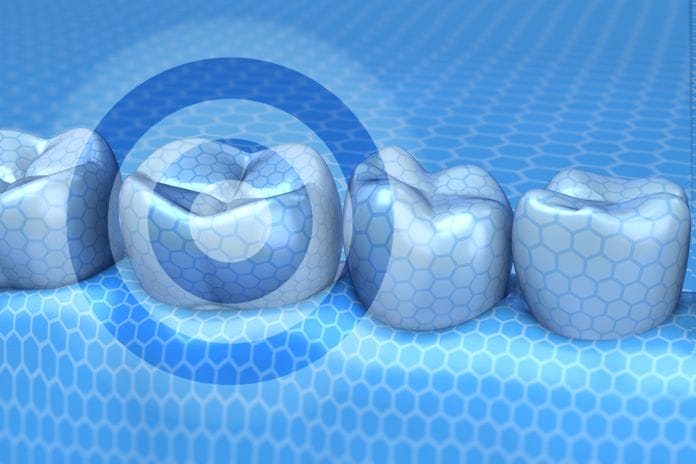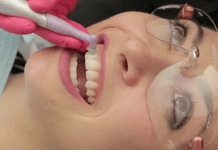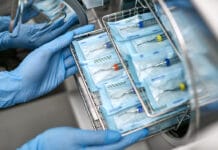As a fairly new hygienist in private practice in New Jersey, I rarely thought about treatment options for a child that presents with a carious lesion. I think to myself, “That tooth will need a composite restoration for sure,” and carry on with the treatment for the day. It is easy to be caught in a daily hygiene “bubble.” We become so used to seeing our patients of a specific demographic and socioeconomic status that we forget there is so much more occurring nationally and globally. Fillings are so standard and routine for us that we don’t think twice about it. But what do we do in a situation where we, as clinicians, have no access to the sophisticated dental supplies we are used to on a daily basis, or something as simple as running water.
When my boss spoke about a possible mission trip to the Dominican Republic, I was intrigued. When I found out I was lucky enough to be selected to serve on this mission, I was ecstatic. I immediately started to think of all the people I would be able to meet and assist. I was excited about making a difference and having a greater outreach. I would be stepping outside of my hygiene “bubble” for sure, and it wasn’t long after we arrived until my “bubble” was popped!
Seeing the need first-hand was overwhelming, as anyone who has served on a mission can attest to. Sure, my team and I served many people, but I could not help but think of all the needs that were not met. Almost every single patient I saw had decay, and almost all of these patients did not see the doctor for restorations. His time was taken up with numerous extractions because the decay had progressed beyond the point of restoring and the patient was in pain.
After our time serving several communities, we came together to discuss what we saw. Among the many issues observed, we all agreed, indubitably, that the most alarming concern was rampant decay in all ages, especially the children. Of course, we know this is a preventable condition. However, their living situations are incredibly limited, and health literacy is lacking immensely. It is almost impractical to imply that preventive care can happen in such an underprivileged area.
There was much thought on how we could assist with the preventive care that these communities need, knowing dental health all starts with prevention. We had to be creative in our ideas because conventional dental care is not an option here due to lack of resources. We can introduce fluoride early on to children, but what about all of those patients we saw that fluoride varnish application wouldn’t simply cut it due to decay that had already progressed past the incipient stage? Certainly, there has to be a way to arrest the decay that is already present, all while keeping in mind their exceptionally limited access to care. Sounds like a tall order right?
Our conversations led us down the path of silver diamine fluoride (SDF). Personally, I had never heard of it, so the research ensued. Silver diamine fluoride is a liquid composed of exactly what it sounds like- silver, fluoride, and ammonia1. Each has its own unique property that when combined, creates a stable topical agent that can arrest caries and prevent caries from progressing. Silver is an antimicrobial, ammonia stabilizes the solution, and the fluoride helps to remineralize1. This product had been FDA approved in the United States since 20142. It is highly effective, relatively low cost, and most importantly, requires little to no materials or clinical expertise to use. This makes it perfect for the application in regions that have little access to care, such as the communities we visited in the Dominican Republic.
It has been shown in studies that silver diamine fluoride was more effective in preventing caries than 5% Sodium Fluoride varnish, and more effective (by 67%) in arresting caries than glass ionomer cement in preschool-aged children3. These studies confirm the effectiveness of silver diamine fluoride and create a solid foundation for its implementation into a program that volunteers can follow when they are serving on a mission trip to this region or any region in need. It is worth mentioning that this product has applications for use in the United States as well, though that is not the focus of this article.
I would recommend that anyone participating in a mission trip bring this product along. With the use of silver diamine fluoride, you cannot only see patients for dental hygiene treatment, but you can also make a larger impact. Instead of applying sodium fluoride varnish as we did, silver diamine fluoride can be applied, and you can make a greater impact. You can easily and quickly arrest areas of decay from progressing, which is remarkable.
As with any other product we use in dentistry, it has its adverse effects. Surprisingly, with silver diamine fluoride, there are very few. Silver diamine fluoride causes the areas of decay to darken, leaving a black spot on the tooth1. This color change, however, is a sign of its efficacy, because you know it has contacted decay and is working2. The solution can also stain the gingival tissue if it comes into contact with it1. This effect will last about 2-14 days1. Aside from this being unpleasing esthetically, there is no harm to the hard or soft tissue1. Patients report a metallic taste upon application, but this dissipates quickly and was preferred over the residual taste and texture of a fluoride varnish1. Silver diamine fluoride can also stain clinical surfaces, clothes, and skin, so care should be taken when using this product1.
It has also been found that silver diamine fluoride is most effective if repeatedly reapplied over a few years1. Reapplication is easy to accomplish in many different ways. The solution could be applied by a clinical member of a visiting mission group, or school teachers of the communities can be trained to apply it to the children. In the Dominican Republic, you do not need to be a licensed dental professional to apply fluoride.
After researching silver diamine fluoride and seeing a real-world application for its use first hand, it’s safe to say that this product has a vital role in both prevention and restoration for a population that has such limited access to care. I encourage all of you to embark on a mission trip of your own to any area in the world that is struggling with access to care. It will open your mind and challenge you in new ways to think outside the box and be creative in caring for those that need our care the most. Community outreach is always important, but with global outreach and our expertise, we can really change lives.
Before you leave, check out the Today’s RDH self-study CE courses. All courses are peer-reviewed and non-sponsored to focus solely on high-quality education. Click here now.
Listen to the Today’s RDH Dental Hygiene Podcast Below:
References
- Horst, J. A., H. Ellenikiotis, UCSF Silver Caries Arrest Committee, and P. M. Milgrom. JUCSF protocol for caries arrest using silver diamine fluoride: rationale, indications, and consent. J Calif Dent Assoc. 2016; 44 (1):16-28.
- Crystal, Y., Niederman, R., Silver Diamine Fluoride Treatment Considerations in Children’s Caries Management Brief Communication and Commentary. Pediatr Dent. 2017; 38(7): 466-471.
- Duangthip D, Chen KJ, Gao SS, Lo ECM, Chu CH. Managing Early Childhood Caries with Atraumatic Restorative Treatment and Topical Silver and Fluoride Agents. International Journal of Environmental Research and Public Health. 2017;14(10):1204.















